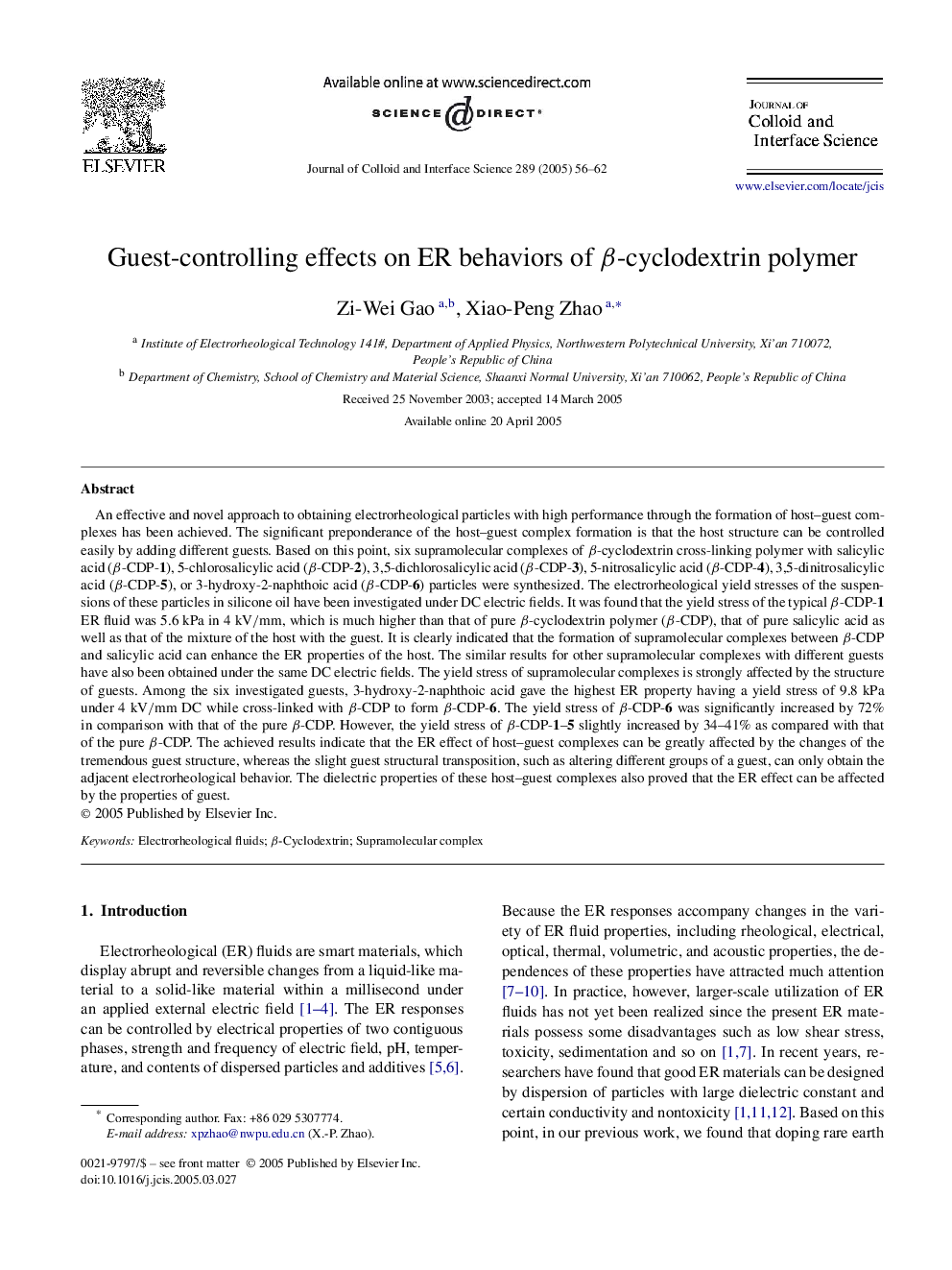| Article ID | Journal | Published Year | Pages | File Type |
|---|---|---|---|---|
| 10377729 | Journal of Colloid and Interface Science | 2005 | 7 Pages |
Abstract
An effective and novel approach to obtaining electrorheological particles with high performance through the formation of host-guest complexes has been achieved. The significant preponderance of the host-guest complex formation is that the host structure can be controlled easily by adding different guests. Based on this point, six supramolecular complexes of β-cyclodextrin cross-linking polymer with salicylic acid (β-CDP-1), 5-chlorosalicylic acid (β-CDP-2), 3,5-dichlorosalicylic acid (β-CDP-3), 5-nitrosalicylic acid (β-CDP-4), 3,5-dinitrosalicylic acid (β-CDP-5), or 3-hydroxy-2-naphthoic acid (β-CDP-6) particles were synthesized. The electrorheological yield stresses of the suspensions of these particles in silicone oil have been investigated under DC electric fields. It was found that the yield stress of the typical β-CDP-1 ER fluid was 5.6 kPa in 4 kV/mm, which is much higher than that of pure β-cyclodextrin polymer (β-CDP), that of pure salicylic acid as well as that of the mixture of the host with the guest. It is clearly indicated that the formation of supramolecular complexes between β-CDP and salicylic acid can enhance the ER properties of the host. The similar results for other supramolecular complexes with different guests have also been obtained under the same DC electric fields. The yield stress of supramolecular complexes is strongly affected by the structure of guests. Among the six investigated guests, 3-hydroxy-2-naphthoic acid gave the highest ER property having a yield stress of 9.8 kPa under 4 kV/mm DC while cross-linked with β-CDP to form β-CDP-6. The yield stress of β-CDP-6 was significantly increased by 72% in comparison with that of the pure β-CDP. However, the yield stress of β-CDP-1-5 slightly increased by 34-41% as compared with that of the pure β-CDP. The achieved results indicate that the ER effect of host-guest complexes can be greatly affected by the changes of the tremendous guest structure, whereas the slight guest structural transposition, such as altering different groups of a guest, can only obtain the adjacent electrorheological behavior. The dielectric properties of these host-guest complexes also proved that the ER effect can be affected by the properties of guest.
Related Topics
Physical Sciences and Engineering
Chemical Engineering
Colloid and Surface Chemistry
Authors
Zi-Wei Gao, Xiao-Peng Zhao,
